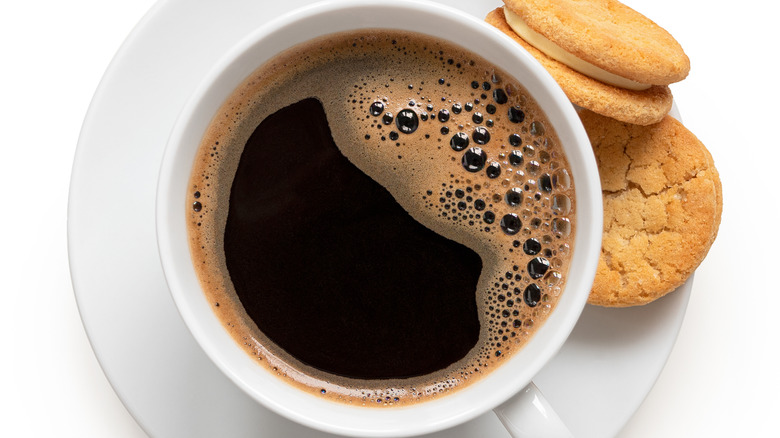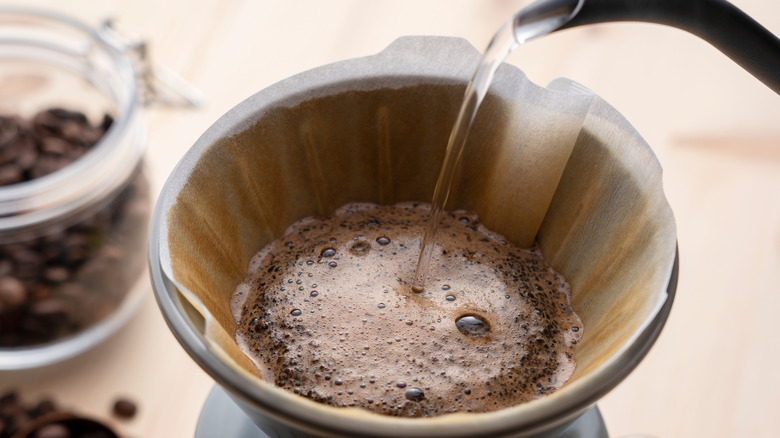What Your Coffee's Bubbles Are Trying To Tell You
You may have noticed with curiosity the presence of bubbles when brewing up a cup of coffee, perhaps wondering why some coffees are more bubbly than others. There's a scientific reason why cups of coffee produce bubbles on their surface (that has nothing to do with an excited rush of caffeine or a lurking, hidden coffee monster).
It's all down to CO2. OregonLive explains that carbon dioxide is formed during coffee roasting, with dark-roasted coffee beans packing more CO2 because they are roasted for longer. The gas gradually releases from the beans over time, but the process speeds up when coffee beans are covered in hot water, resulting in a bubbly brew.
So, a bubbly coffee is perfectly harmless, but why do some coffees have more bubbles than others — and why don't others have any at all? Fortunately, someone has taken the time to research this and investigated whether the quantity of bubbles is linked to the quality of coffee.
More bubbles means a better coffee
It's something you may never have considered, but the bubbles in your coffee are actually a very important indicator of the quality of your drink. Serious Eats researched how the temperature of the drink, the roasting date of the beans, and the type of roast affect the number of bubbles produced. Someone was surely on a caffeine high after all that work.
The coffee detectives deduced that coffee beans lose more carbon dioxide the longer they are exposed to the air, which corresponds with fewer bubbles being born when they are brewed. Really old coffee is never going to be the tastiest, but very fresh coffee might not be an instant success. It's best to use hotter water and a longer simmer time for fresh-ground coffee to ensure the full flavor is released — but once those bubbles begin to fade away, it's time to get sipping.
Dark roasted coffees have more carbon dioxide so produce bubbles quicker than lighter roasts, indicating that a particularly lively coffee could be from a dark roast. Because they're a little slower to get going, lighter roasts may benefit from a longer brewing stage to allow bubbles to properly form. However, the lack of bubble formation could also be a sign that the water temperature is too low, so it's crucial to consider that as well.

